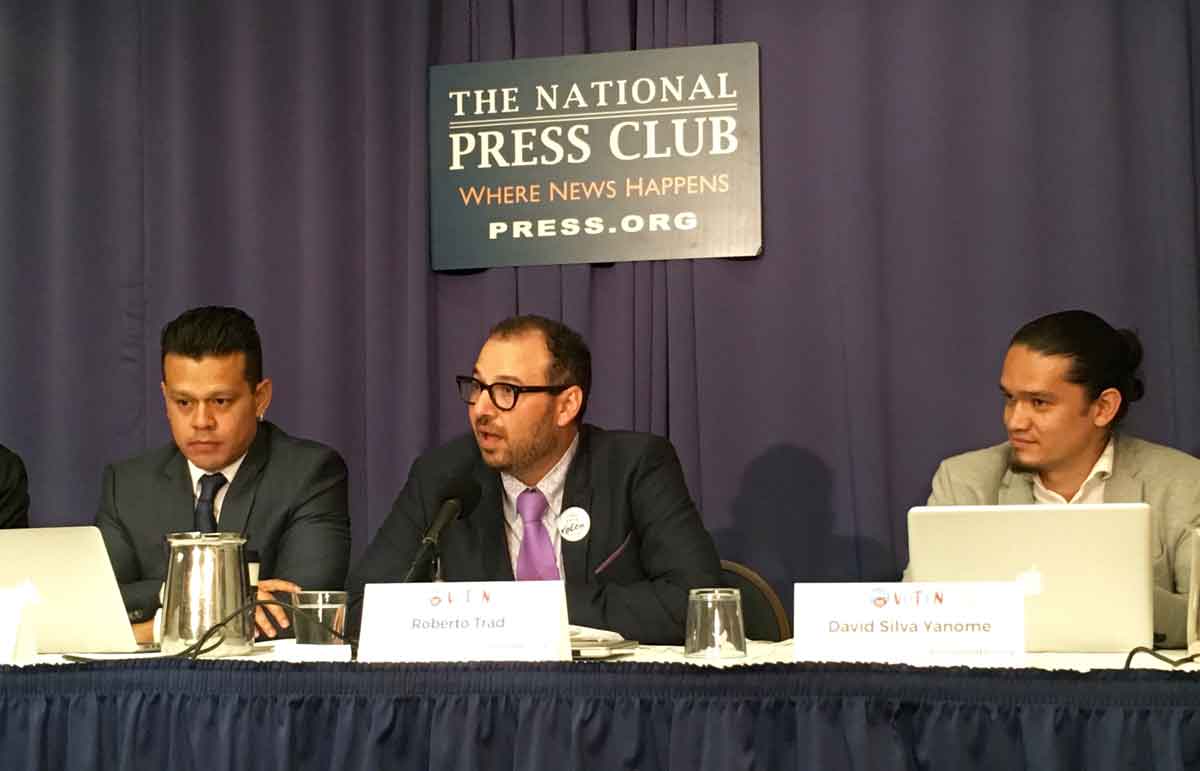WASHINGTON–A non-partisan group is aiming to mobilize Latino voters in a new way: by urging their their families to tell them to vote.
“Latinos learn democratic culture from their homes. So our focus is to go back to the families in their original countries to educate and promote these values. This is what’s different about this campaign,” said Roberto Trad, executive director of Diles Que Voten, or “Tell Them to Vote.”
The number of Latinos eligible to vote increased by 19 percent in the 2012 presidential election, according to a 2013 Pew Hispanic Center report. But that increase wasn’t evident at the polls, where Latinos had just a 48 percent turnout, compared to 66.6 percent among blacks and 64.1 percent among whites.
“We want to bring the gap down,” Trad said at the National Press Club in Washington, D.C., Monday.
The new Diles Que Voten campaign features print, TV and radio public service announcements in both English and Spanish, as well as online material. Campaign ads in Spanish with English subtitles have already been launched on YouTube.
In one of those ads, people who have relatives in America talk about what the American election means to them and how it will affect the lives of their loved ones. “If you have family or friends living in the U.S. and they are eligible to vote, tell them to vote,” the people in the commercial say.
Election outcomes do not always “resonate” in immediate results for Latino communities, Tran pointed out. And standard political ads simply translated from English to Spanish are unappealing and uninspiring to many Latino voters, explained Israel Navarro, spokesman for Diles Que Voten.
According to the Pew Research Center, the Hispanic electorate is expected to grow to 27.3 million eligible voters this year, a 17 percent increase from 2012.
The low turnout rate in 2012 reflects a lack of familiarity with registering and participating in the voting process, Navarro explained. But it’s not enough to simply explain the importance of voting. Latinos must be persuaded on a personal level that it is in their interest to vote, Navarro said.
“We believe that in order to increase the participation turnout rates is to communicate in a more emotional way — that is through their families. That’s their main drive,” Navarro said.


